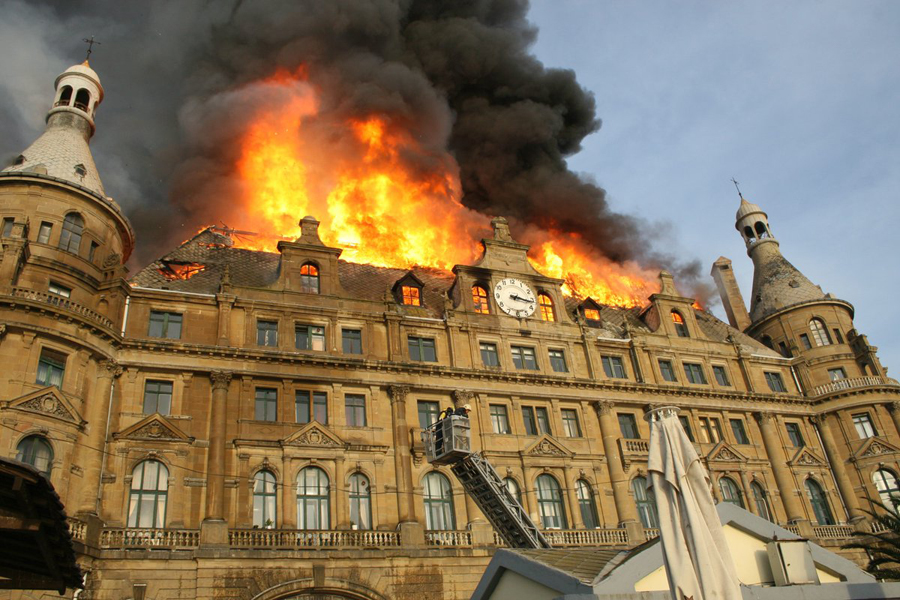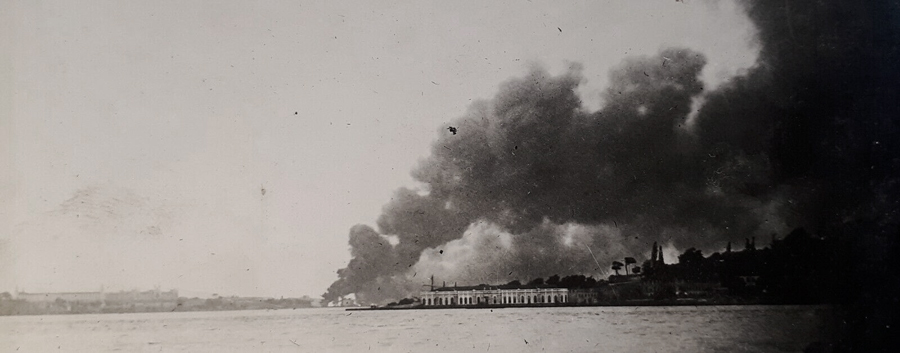
Ephemera
Haidarpasha explosion
One of Istanbul’s most iconic sites, the Haydarpasa Railway Station, was built during the reign of Ottoman Sultan Abdülhamid II.
The station was built by German architects Otto Ritter and Helmuth Cuno, as the starting point of the Istanbul-Baghdad, or Hejaz railway. Many of the station’s sections and the passenger lounge were opened on Aug. 19, 1908.
On the first day of its opening, the station suffered a fire and was only reopened on Nov. 4, 1909 after a restoration process. The building was used as an armoury during World War I, but was sabotaged on Sept. 6, 1917 when the armoury exploded. The station building became a shell and the area was bombed from the air twice in 1918 by the British to add to the destruction. On the 10th anniversary of the founding of the Turkish Republic (1933), the station was rebuilt to its original state and a comprehensive restoration was also carried out in 1976. The building still stands however today it is not operating as a railway terminus but the centre of a long-running controversial development battle.
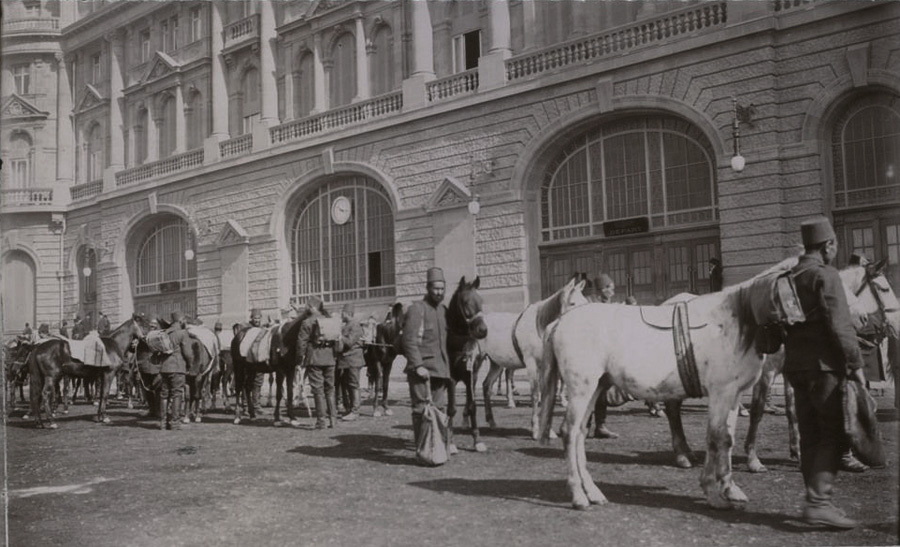
Ottoman cavalry troops before boarding a train in Haidarpasha station.

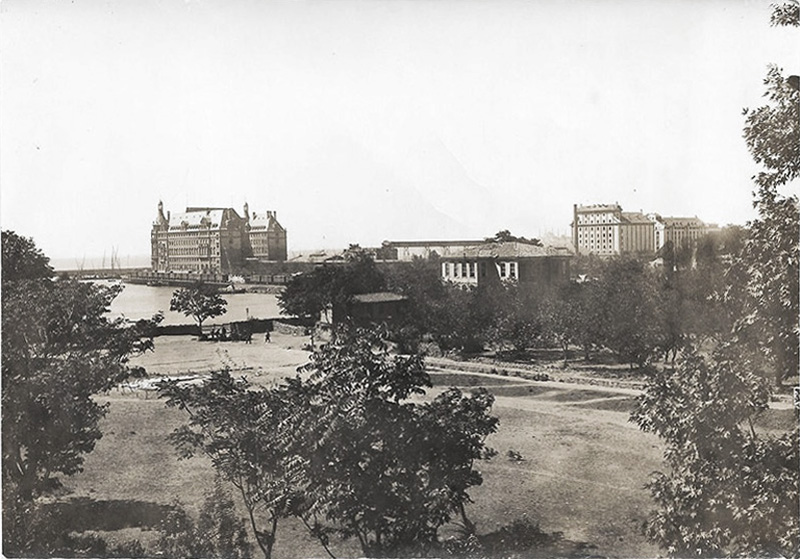
Scene before the explosion.
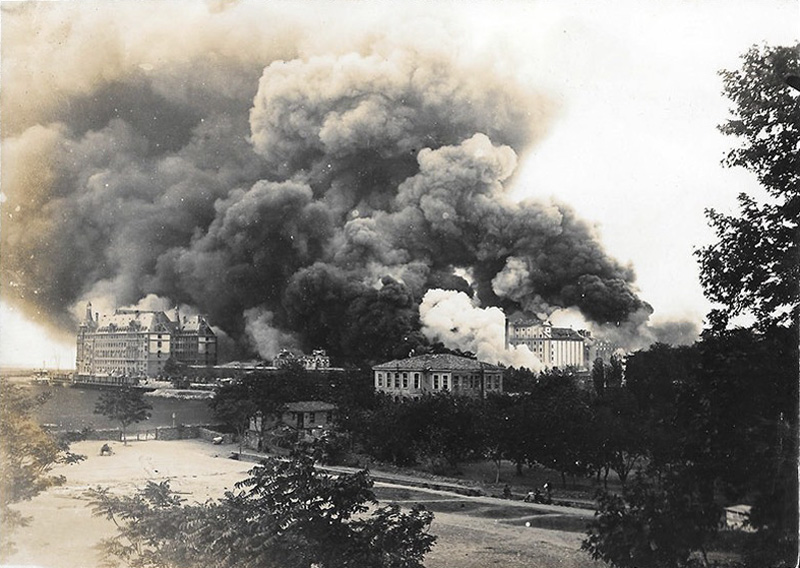
Multiple fires and secondary explosions break out.
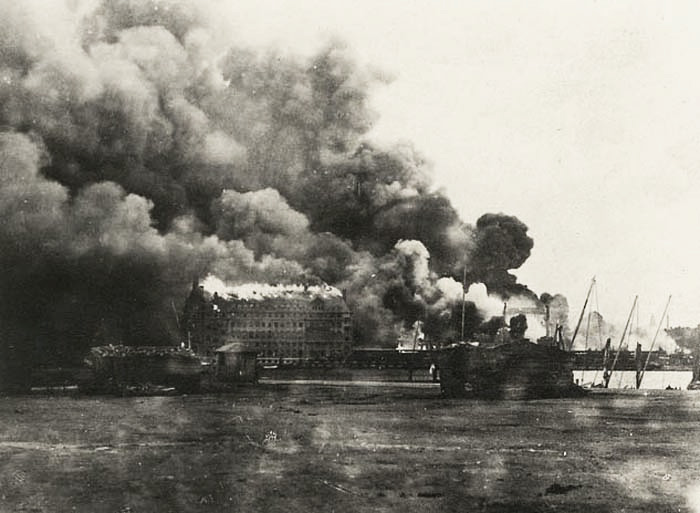
The roof of the station building catches fire.
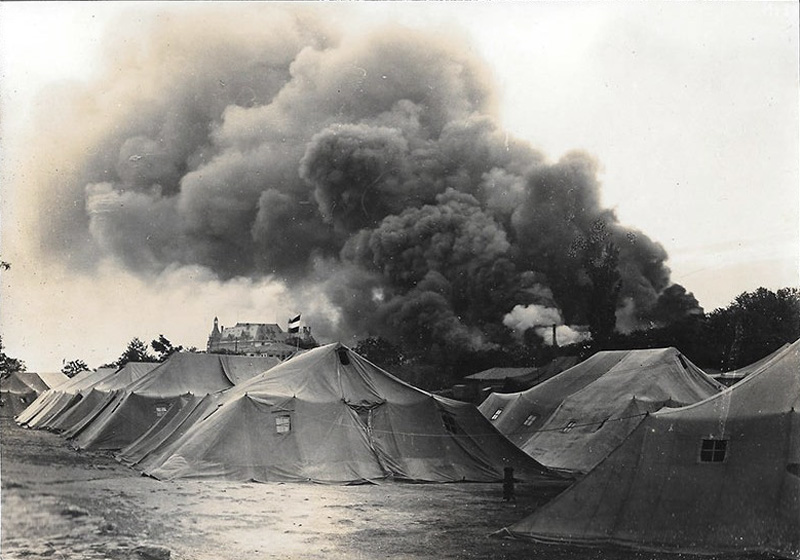
What appears to be the Austrian section of the military camp seems to have avoided the damage.
The fires viewed from the European shore.
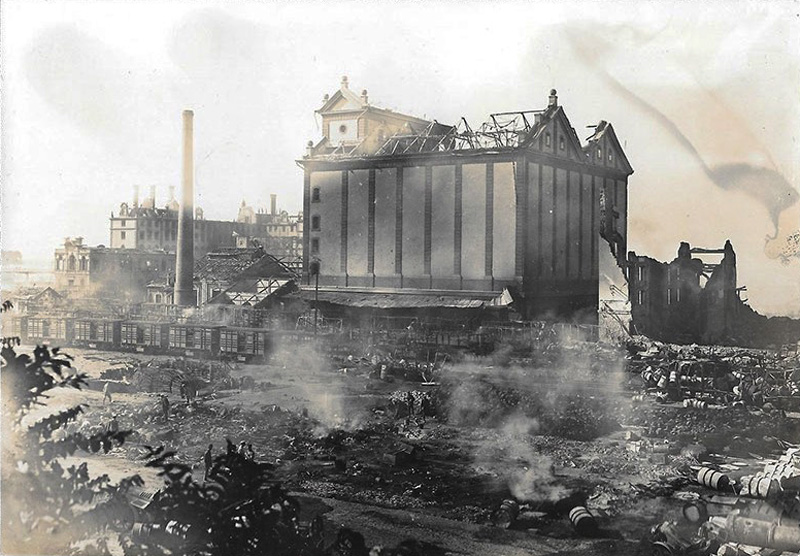
The aftermath.
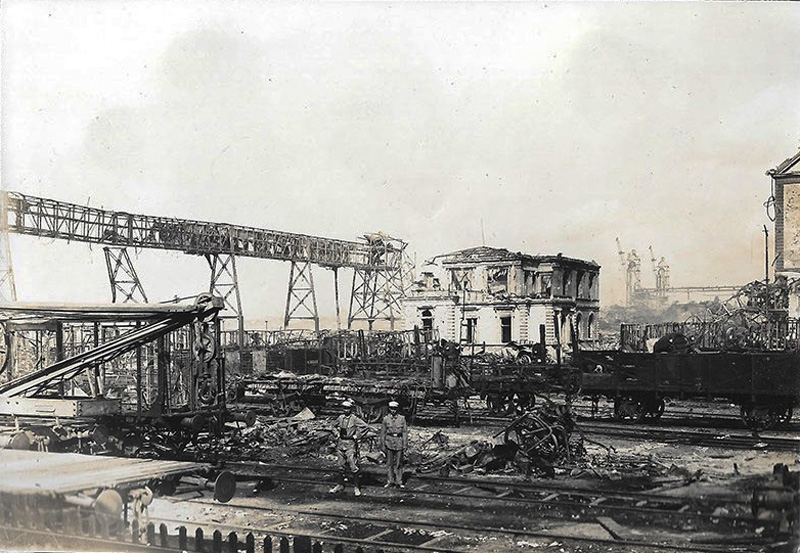
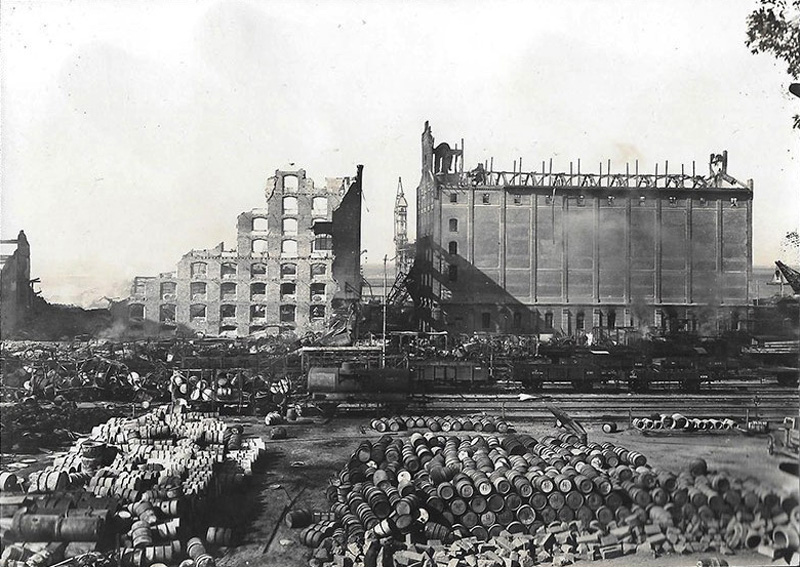
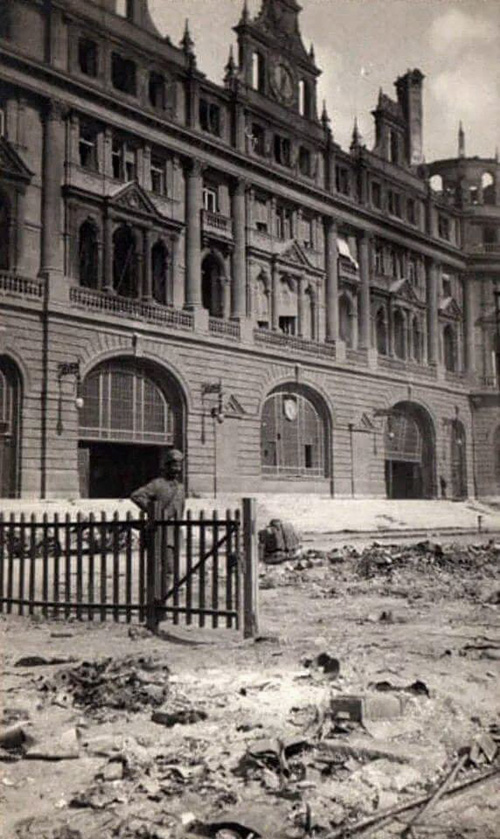
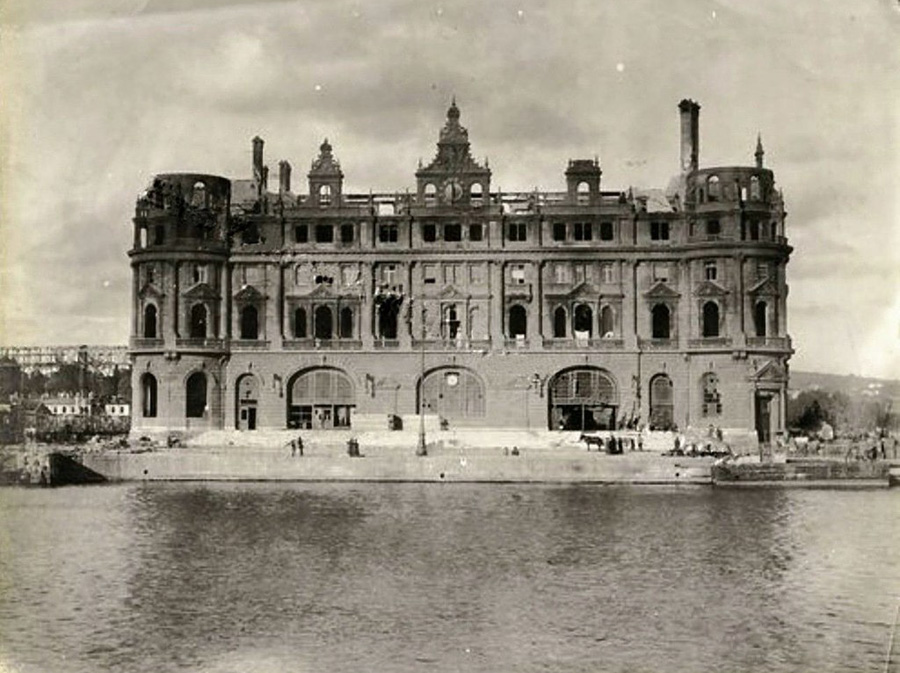
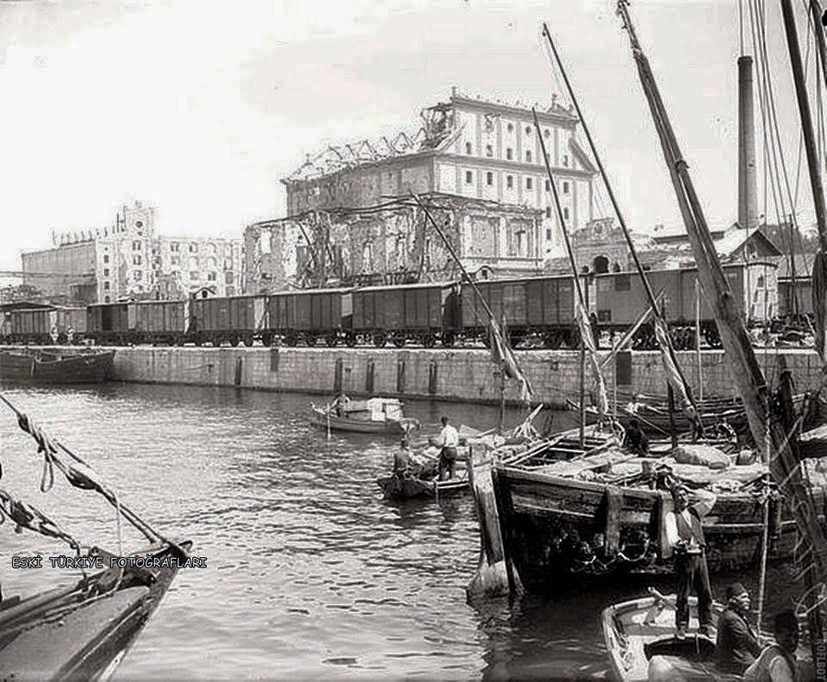
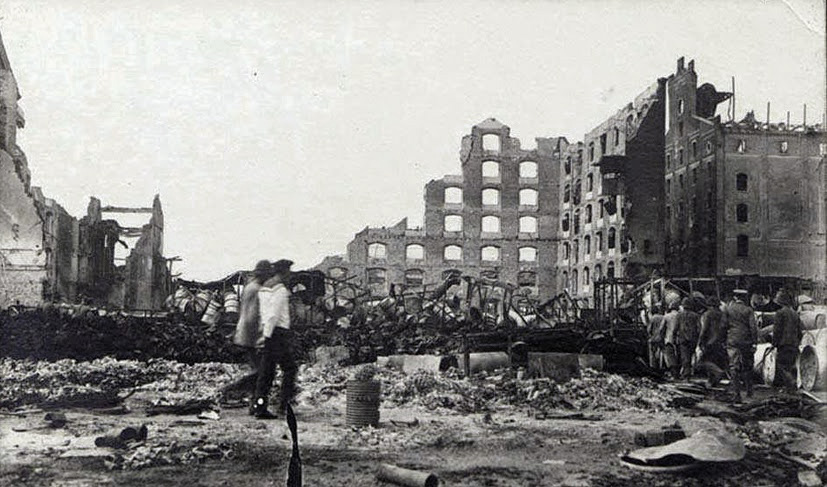
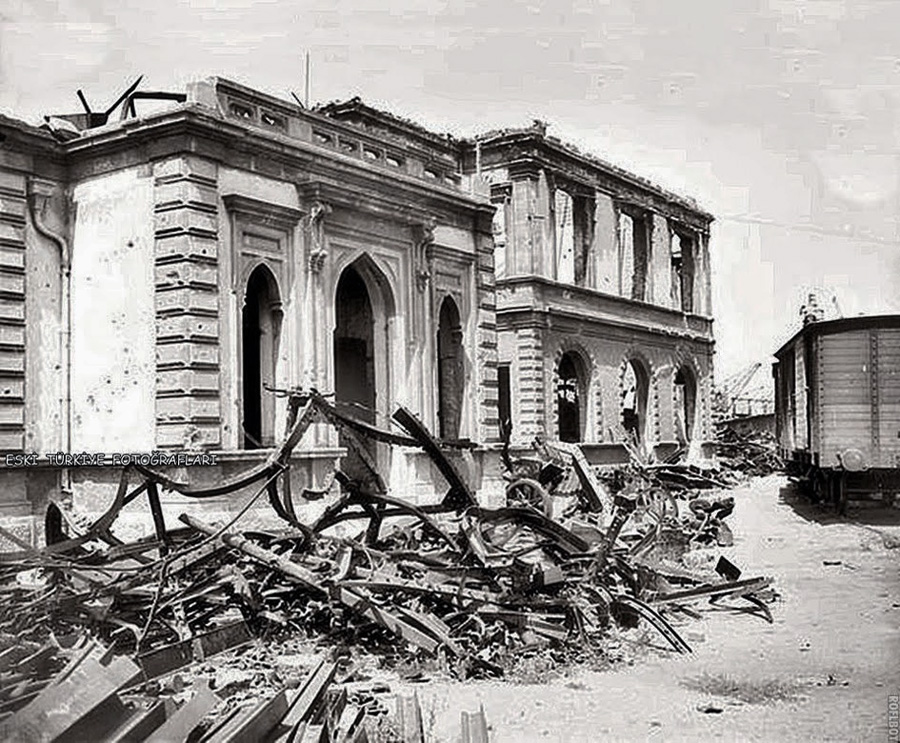
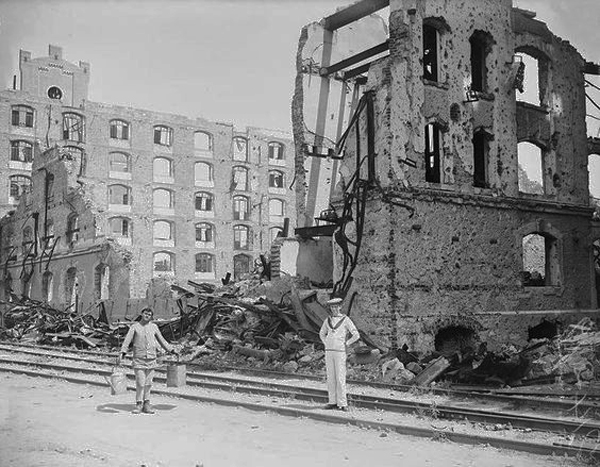
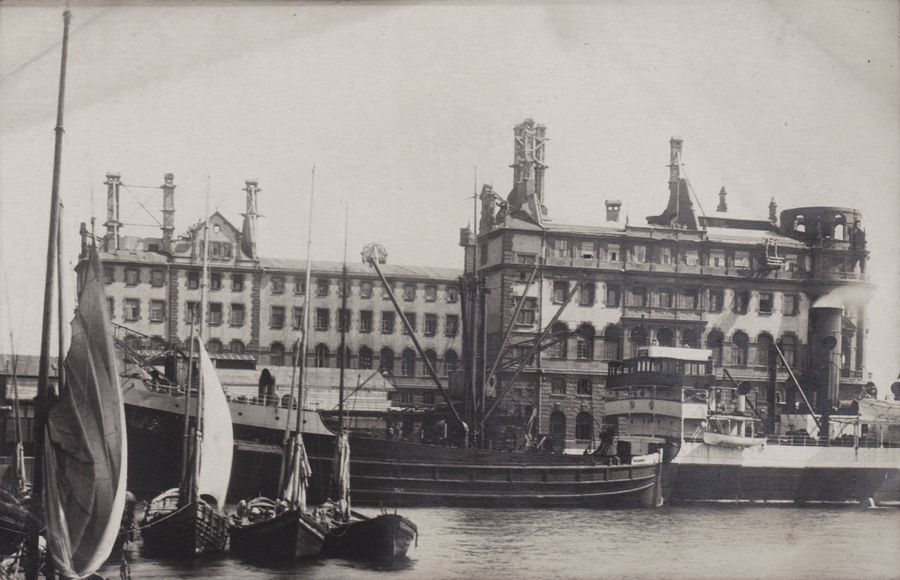
Slow reconstruction around 1930.
During WWI there was an extensive German encampment that stretched from the station building on the shore to miles inland with German military equipment waiting to be railed east The explosion was massive, killing Ottoman, German and Austrian troops in the hundreds and clearly civilians were also caught up and figures have never been released (some estimates put the figure around 1,000). The station building and all ancillary buildings were severely damaged and were effectively out of order for the rest of the war. The event was censored in the local press and it had a serious effect on the resupply on the hard pressed Ottoman troops fighting the British and Arab irregulars in the Middle East.
Sabotage was suspected from the start, however nobody claimed responsibility. However in June 1934 Blackwood’s Magazine published an article entitled ‘A bow with two strings’ that attributed the incident to a clandestine operation conducted by a Secret Intelligence Service (SIS) volunteer agent identified as an Irish Armenian doctor named George Roupin [the surname is probably a cover name as it has a French feel]. Apparently a German secret document, recovered from a fire at a headquarters at Kreuznach, had indicated a planned Turkish offensive and pinpointed the munitions at Haidar Pasha as the site where the necessary weapons and explosives were being assembled.
Although the story was retailed in fictional terms, many of its details were entirely authentic, including a very accurate description of an unnamed naval officer, “a thick-set man wearing an eye-glass and walking with a limp” who was said to be ‘the Chief of British Intelligence Service in the field’, a portrait that Mansfield Smith-Cumming [the first director of what would become the Secret Intelligence Service (SIS), also known as MI6] must have recognised. Indeed, the naval officer, who had briefed Roupin for his mission, had lost his son in the war had himself been involved in an accident on the Meaux Chaussée. The author calling himself ‘Hasta’ [Turkish for Sick], remains unknown.
During both World Wars Istanbul was a centre of intrigue and spying and though Levantines were in the periphery of the ‘cloak-and-dagger’ operations, the resident communities no doubt were consulted for local knowledge and in some cases such as with Noel Rees etc. with his escape and spy infiltration network between Turkey and the Greek islands no doubt help shorten the war.
